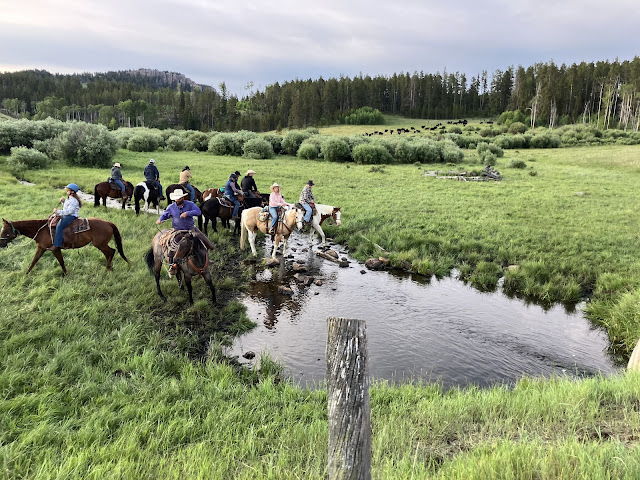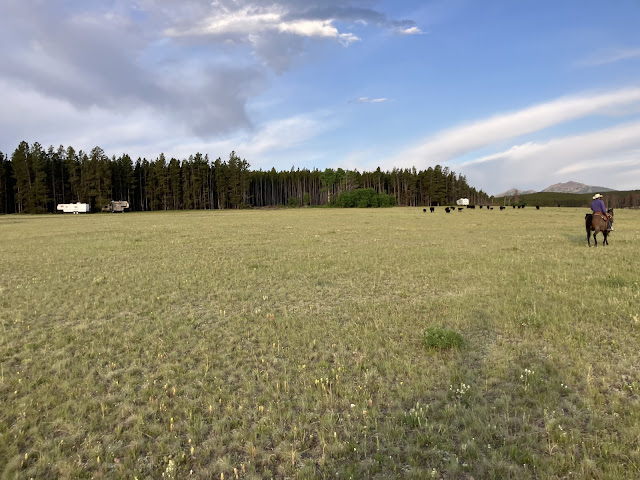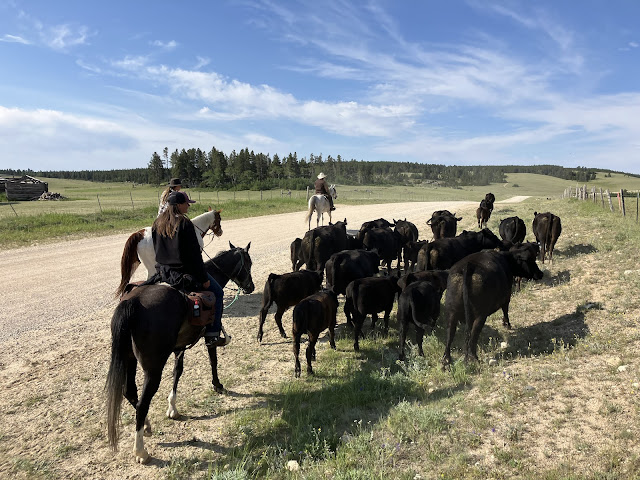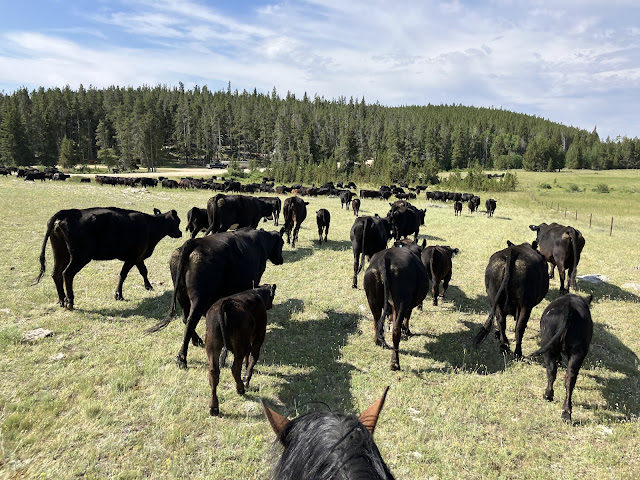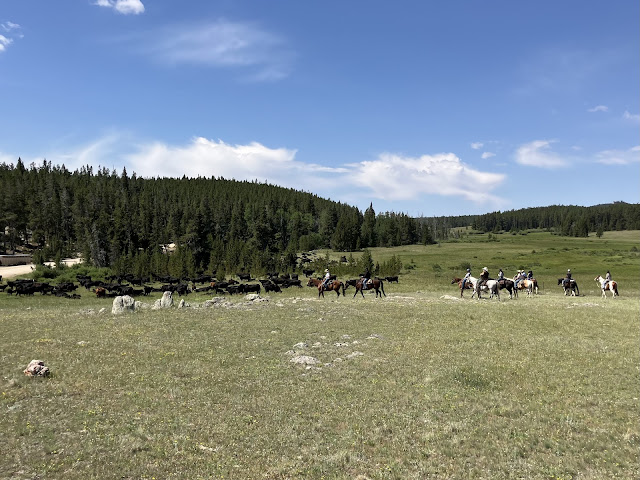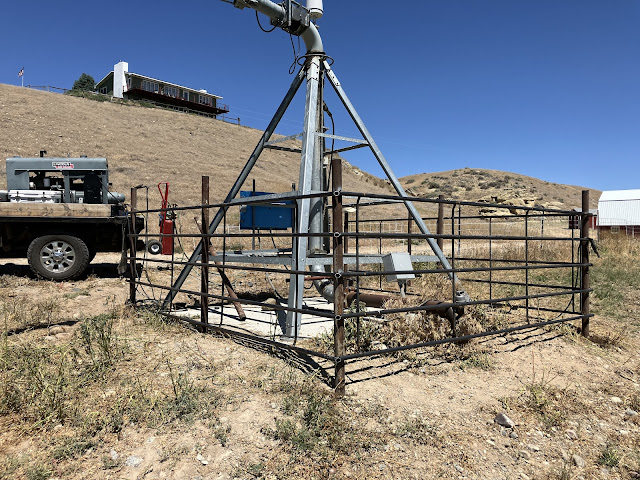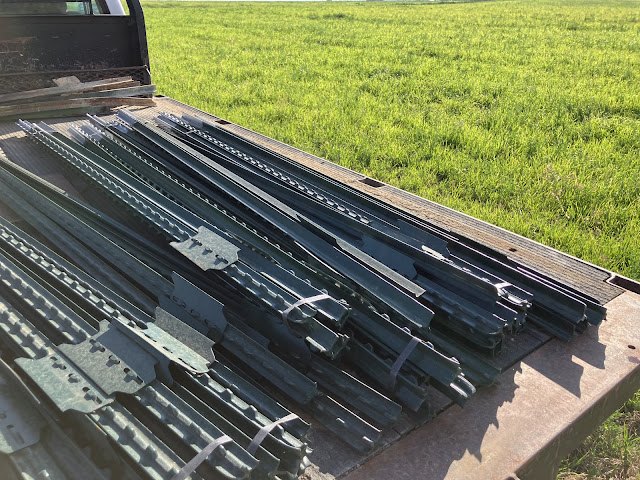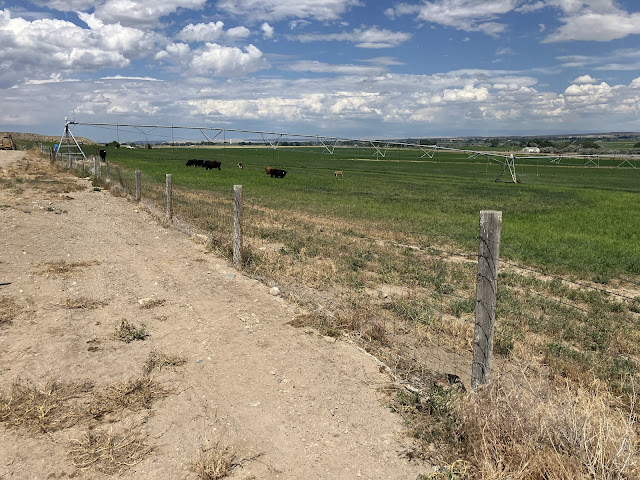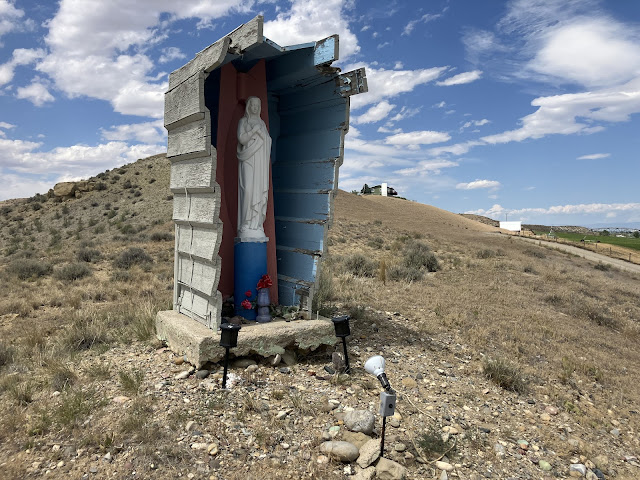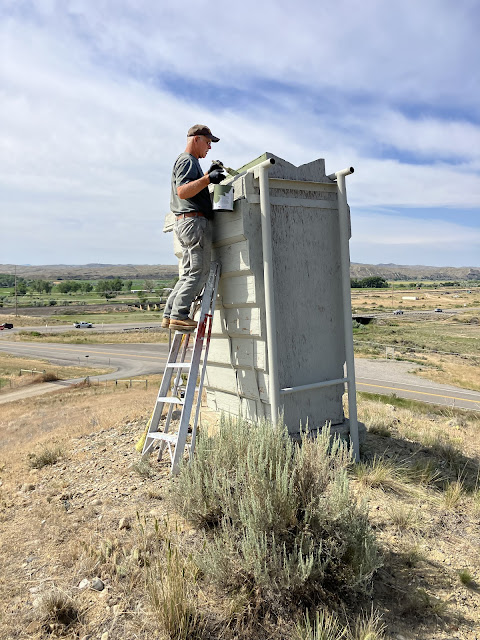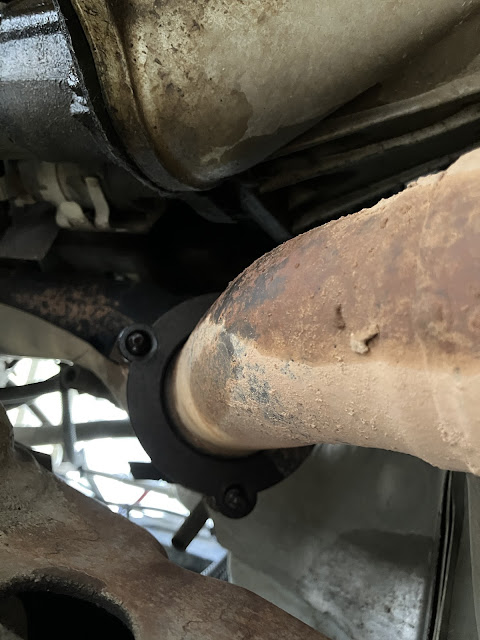135 years ago, Wyoming was officially made a state. No better way to celebrate that gift than with a cattle drive in the Bighorn National Forest.
Doyle Creek would be our destination.
At 5:00am, Richard and Patty Tass met me in town, and Chief and I followed them up to Muddy Creek, above Crazy Woman.
Here the riders were getting mounted up. This is not your average ranch. The Tass's operate a guest ranch in conjunction with their cow/calf operation. They basically give guests from around the world the opportunity to take part in real ranch activities, like driving cattle up the Bighorns.
Two days ago, they moved the cattle from the ranch to the base of the Bighorns. Yesterday, they pushed them up the mountain. After everyone rested over night, we set out to drive them to their summer range.
After everyone's horse was watered,
We set out. Not a walk in the park, but close to it.
The cows knew where they were going and wanted to get up high where it's cooler. In the distance are the Hazelton Peaks.
Being Nation Forest ground, there's a lot of campers around. You can pretty much camp anywhere, a certain distance from the road. Also, you can leave you camper parked in the same place for up to 14 days. Consequently, many people take advantage of this beautiful campground.
About an hour into our ride, Hank joined in.
We came up Billy Creek Road where it tees into the Hazelton Road. From There we headed south.
Eventually, our group got stuck with the stragglers. You're only as fast as your slowest cow!
Many cool cabins around this area.
Popular sheep country too.
Eventually we met the rest of the herd at Doyle Creek.
Time for a drink.
And some lunch.
Before we all mounted back up for the final push.
Nice drive through the gate to their summer home. Enjoy girls!
Fun stuff. Beautiful day and way to celebrate the anniversary of the 44th state of the Union. God bless American and Wyoming in particular! Special thanks to the Tass's for letting me tag along. It is very generous of you to share this wonderful way of life with guests from near and far. Keep on ranching in a free world!





